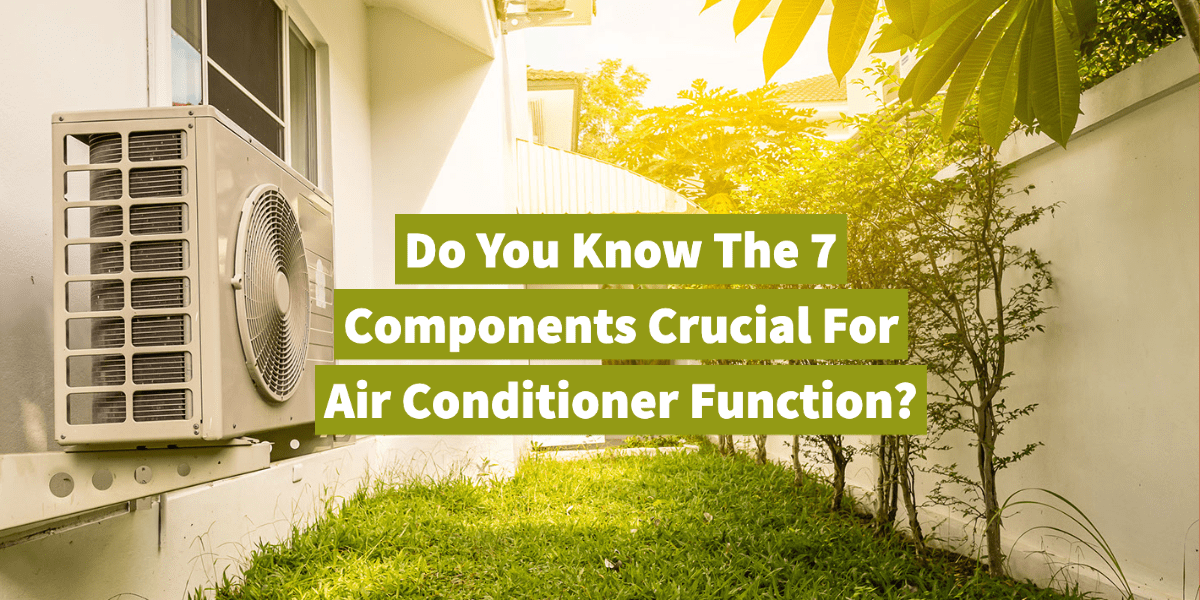Your air conditioner is made up of a number of parts that work together to reach the ultimate goal of keeping your home cool and pleasant. Have you ever questioned what makes up your air conditioner? If all elements are in good working order, most home air conditioners may be virtually undetectable. However, knowing these components on your air conditioner may help you understand how it works and keep it in excellent working order for years to come. In this article, our HVAC specialists at Clayton-Englewood Heating & Cooling explain it all!
Evaporator Coil
Evaporator coils perform an essential function in the operation of your air conditioner by absorbing all of the heat from your home. The refrigerant in the evaporator coil is captured by copper tubes that are subsequently depressurized by the expansion valve. As a result, the heat inside your house will be absorbed as air passes over the cold coils. To transfer heat from the condenser coils, you’ll need a condenser fan to blow air over them; similarly, indoor air handlers utilize evaporator coils to move air over their surfaces.
Compressor
When refrigerant is compressed, its temperature rises, accomplished by the compressor in the air conditioner. The combined gas law, which comprises Gay-Lusaac’s Law, Charles’ Law, and Boyle’s Law, states that when the refrigerant is compressed, it heats up. This helps remove the heat from your house and send it outside. However, for the refrigerant’s temperature to increase higher than the air outside, it must be compressed. As a result, the compressor is used to boost pressure so that refrigerants can reach those more elevated temperatures.
Condenser Coil
Condenser coils, unlike evaporator coils, are generally placed in the outdoor unit. The refrigerant is carried through the condenser coils, which transport hot refrigerant, and the evaporator absorbs cool refrigerant. Condenser coils are used to assist in the transfer of heat from inside a home to the outside world. The condenser fan blows air over the coils, causing heat to be transferred from the refrigerant to the environment as it is cooled. When the gas temperature drops, it goes through the expansion valve from a gas to a liquid state.
Expansion Valve
When refrigerant has cooled to the point that it can enter the expansion valve, it is still far too hot to enter the condenser. The expansion valve, which sits between the evaporator and condenser, plays an important part. The pressure in the refrigerant is reduced by the expansion valve. As a result, the refrigerant transitions from a liquid to a gas in the evaporator as pressure is taken away.
Air Filter
Air filters remove pollutants like dust, dirt, bacteria, and more from the air within your home.
Depending on the goals you’re trying to achieve for your home’s indoor air quality, there are a variety of air filters to choose from that can help. To ensure your HVAC system stay running efficiently and the air in your home stays clean, be sure to change out your air filters every 1 to 3 months.
Refrigerant
Because it has been discussed a few times throughout this article, you may be curious about what refrigerant is. Refrigerant is an essential component in air conditioning systems because it transports heat from the interior of your home to the outside environment while cooling your home. In addition, the ability to change from a liquid to a vapor at the proper temperatures makes refrigerant perfect for what it takes to keep your home cool.
The refrigerant circulates through your air conditioner’s pipes and copper coils, connecting the indoor and outdoor components. The inside unit absorbs heat, causing the refrigerant to transition from a gas to a liquid. The refrigerant is then carried to the outdoor unit to remove heat from your home. When the heat is removed, the refrigerant will transition and flow back. This process will repeat as long as your air conditioner is switched on to keep your home cool and comfortable.
Thermostat
Thermostats are the control center for your air conditioner because they manage the ideal comfort and temperature levels in your home. When the temperature in your house isn’t where you want it, your thermostat sends a signal to turn on your air conditioner. Your thermostat’s sensitivity to temperature and humidity varies depending on your preferences. To keep from interfering with your air conditioner’s home comfort settings, place your thermostat in an out-of-the-way location away from sunlight.
It’s simpler than ever to recognize your air conditioner and how vital each component is to the function of keeping your home cool and comfortable. But, if you still have difficulties comprehending your air conditioner and want expert assistance, contact Clayton-Englewood Heating & Cooling ‘s HVAC professionals right now! Call us today at (937) 412-2911, or schedule an appointment online by clicking here!





